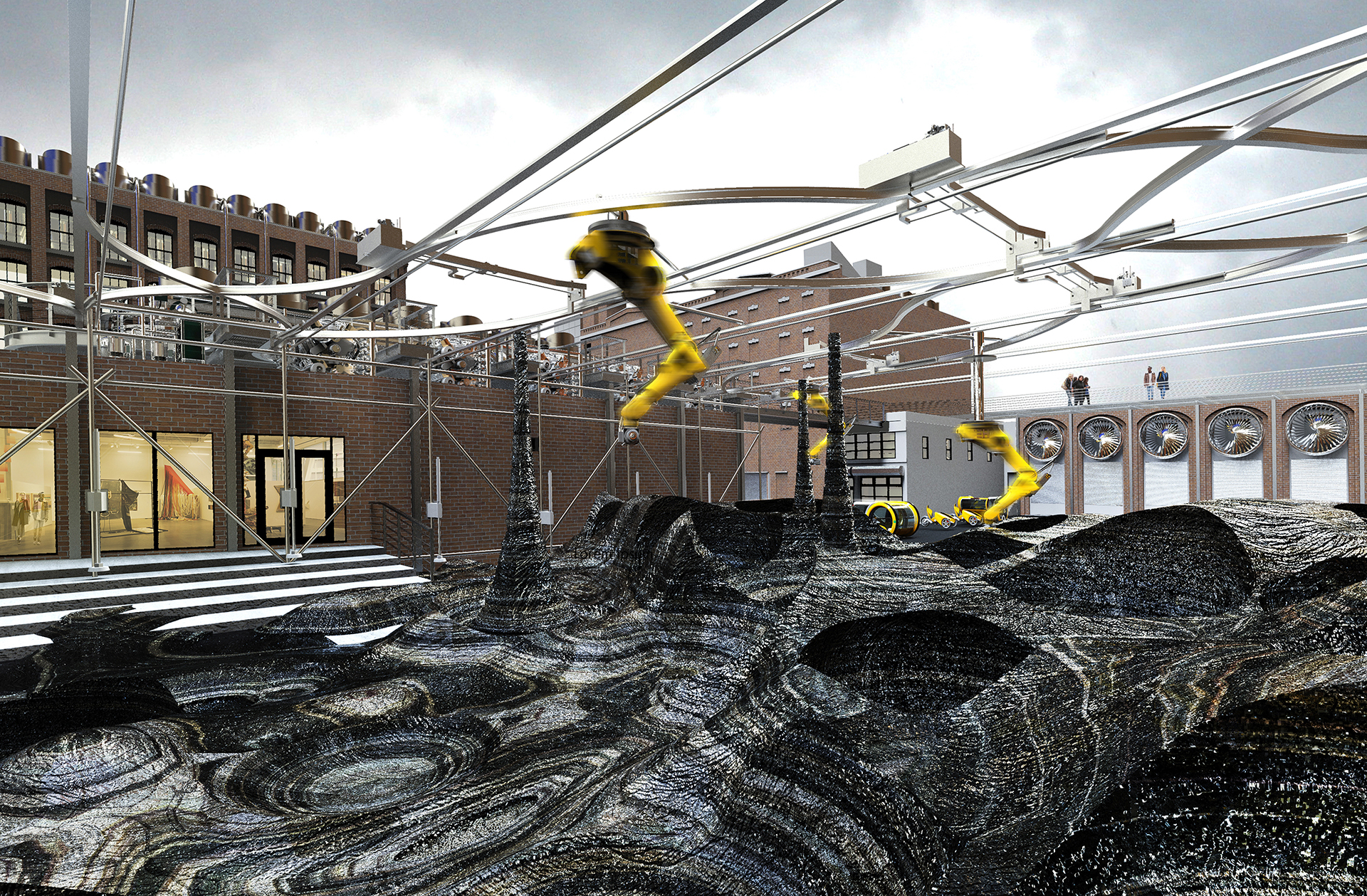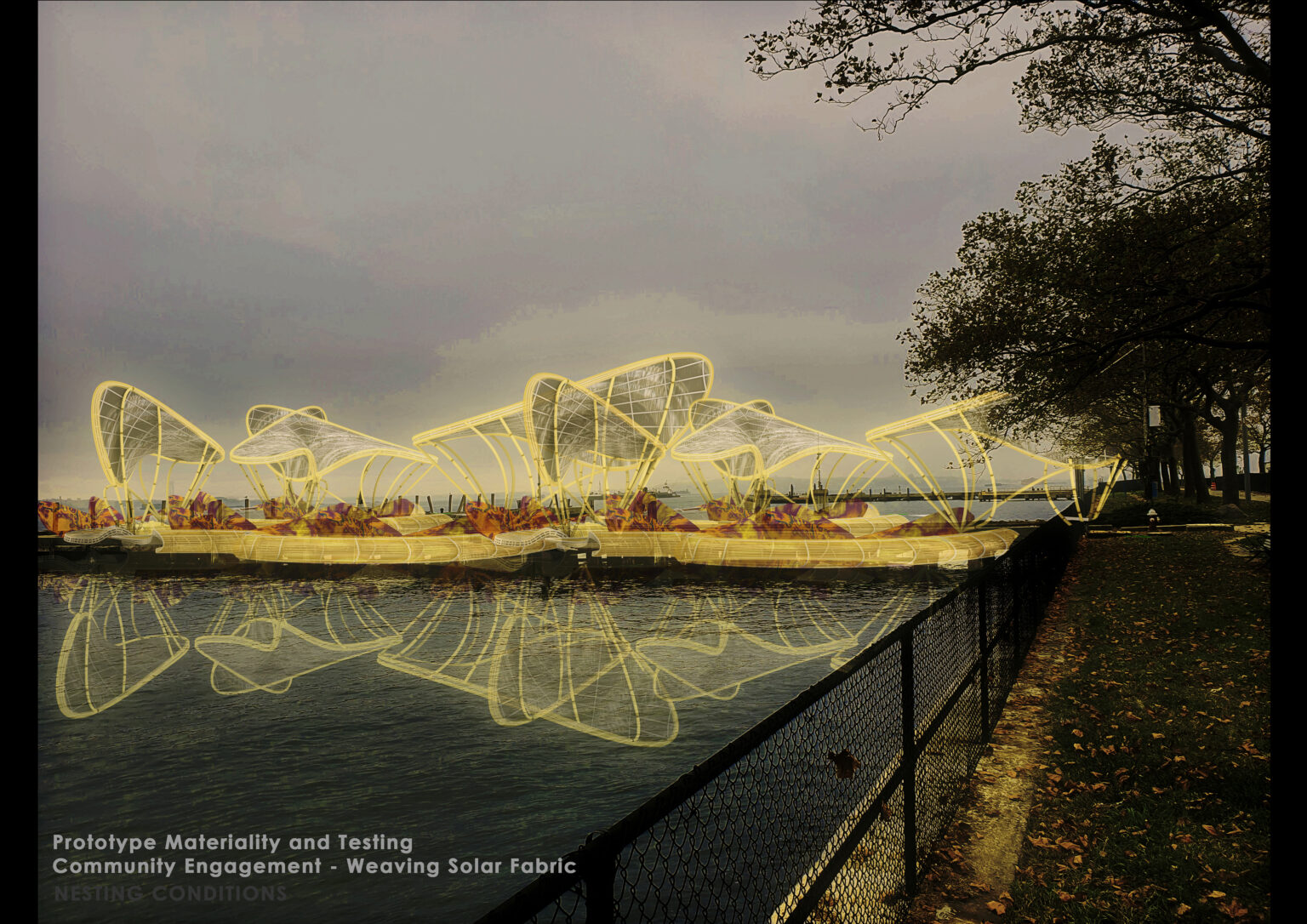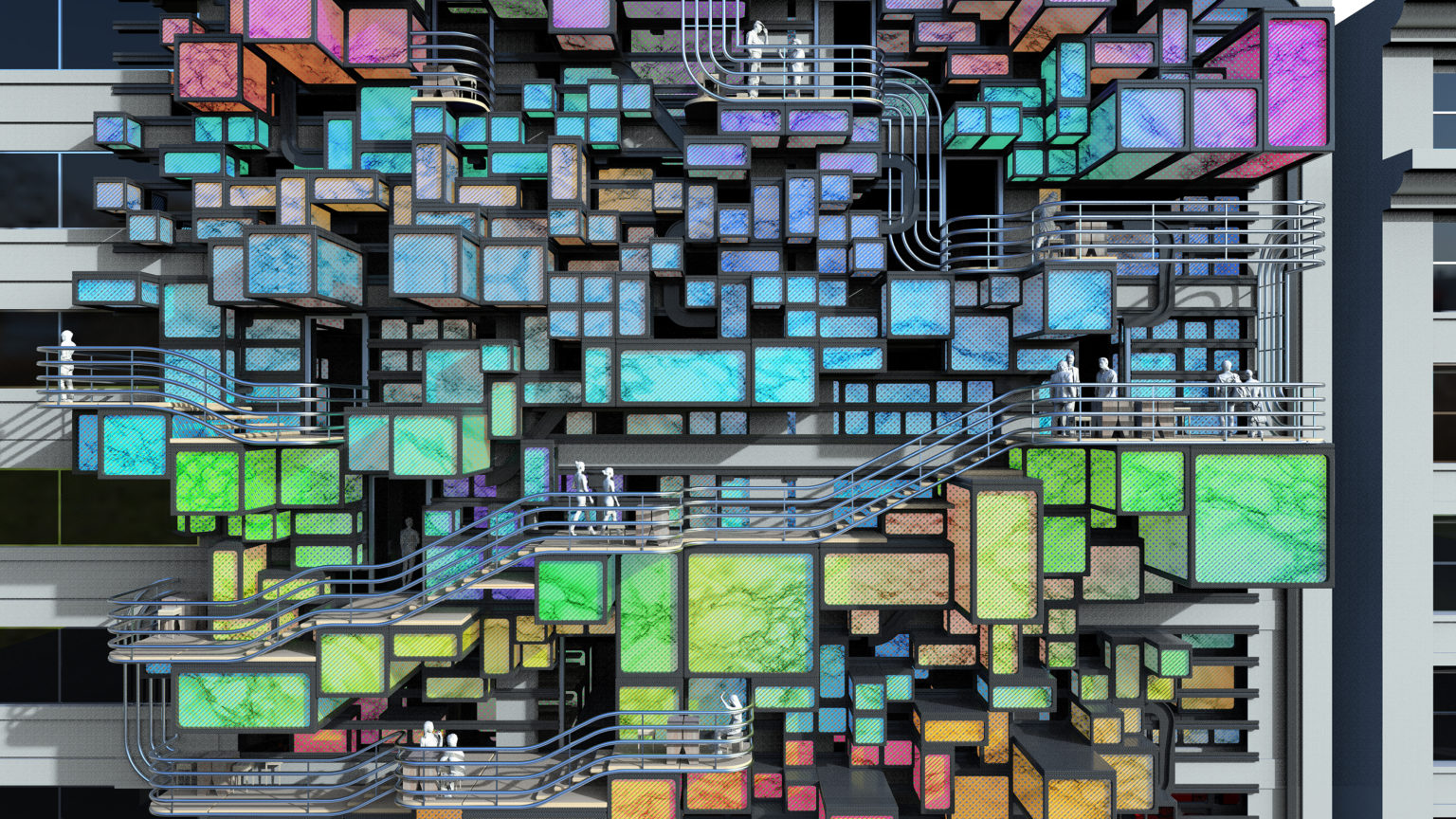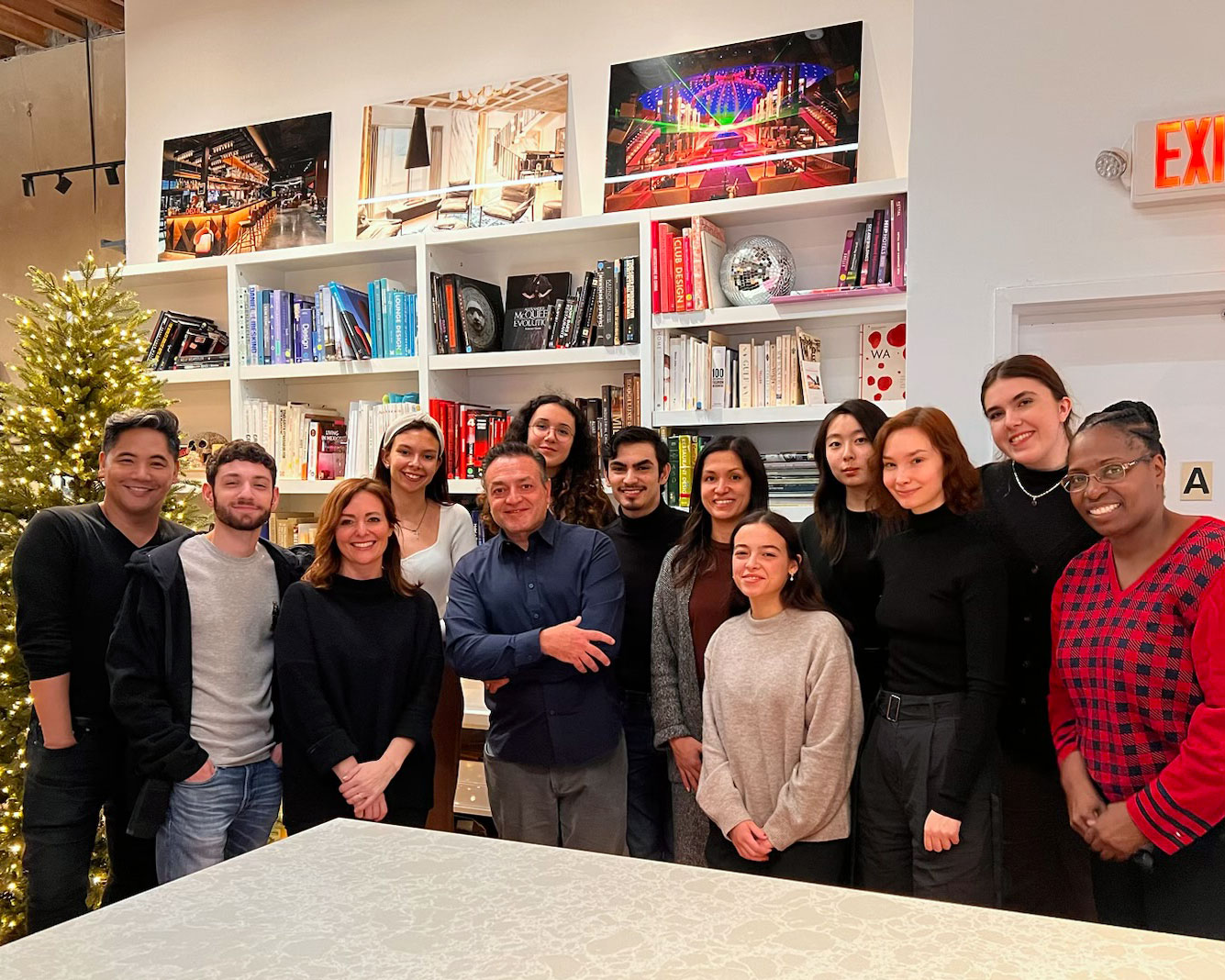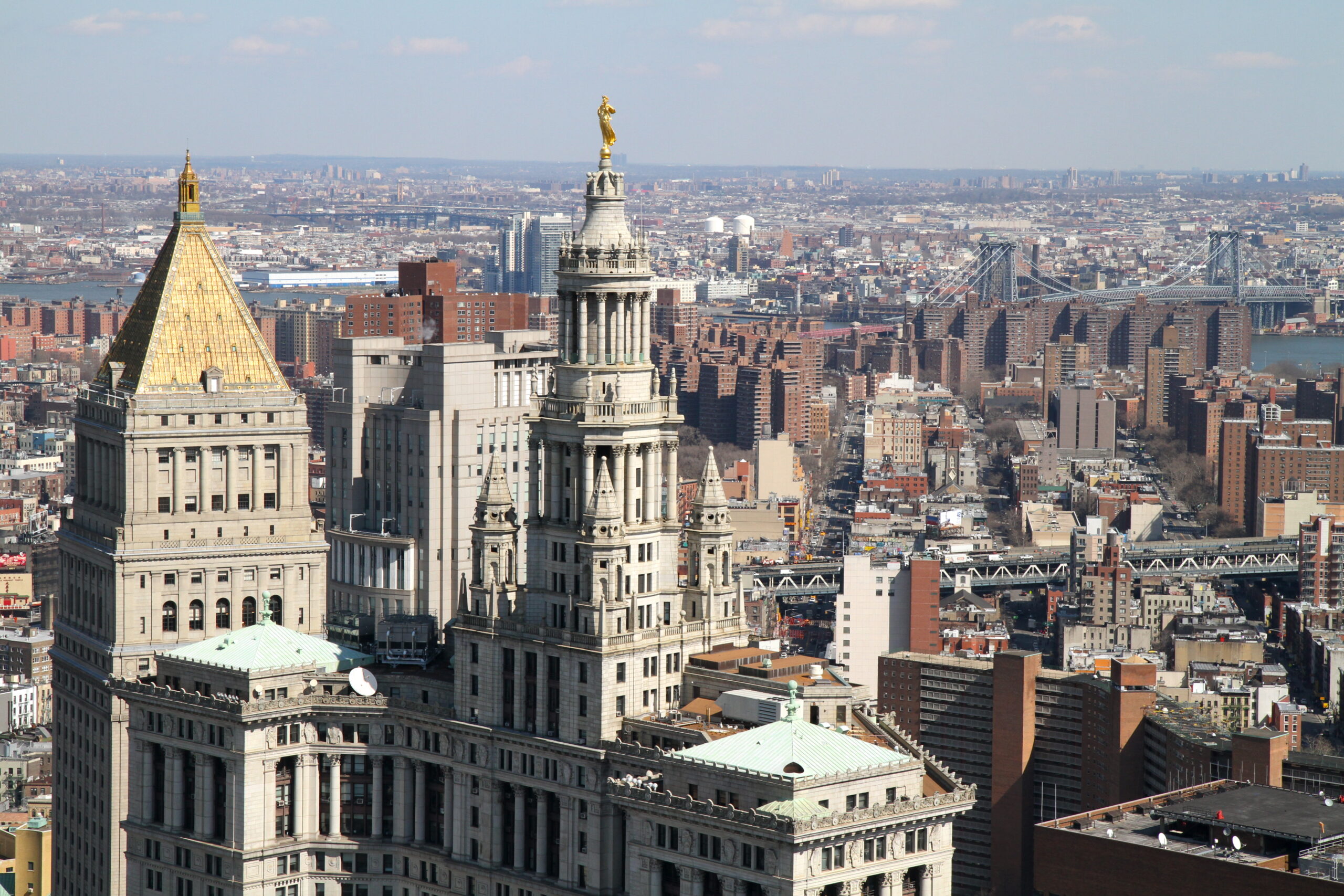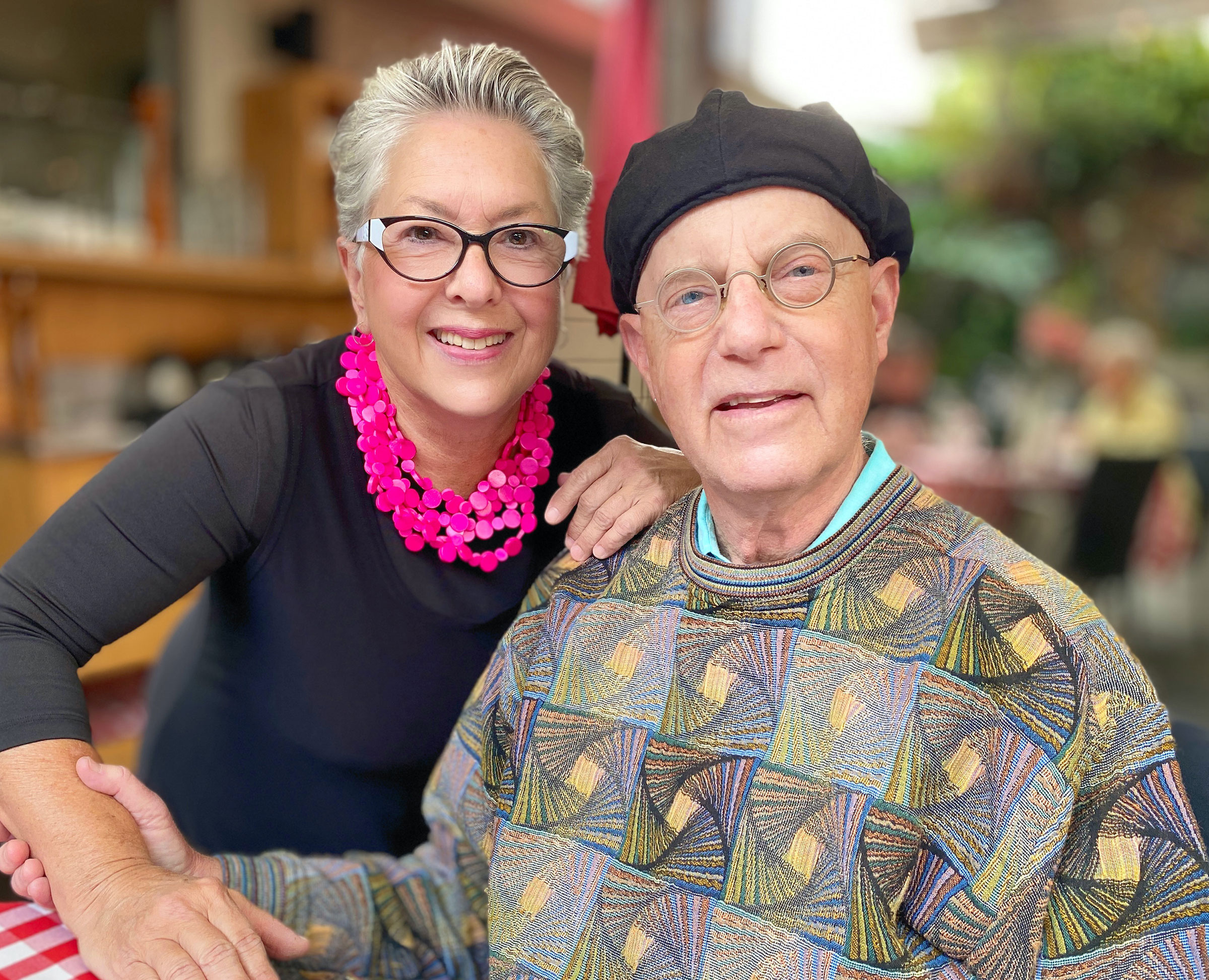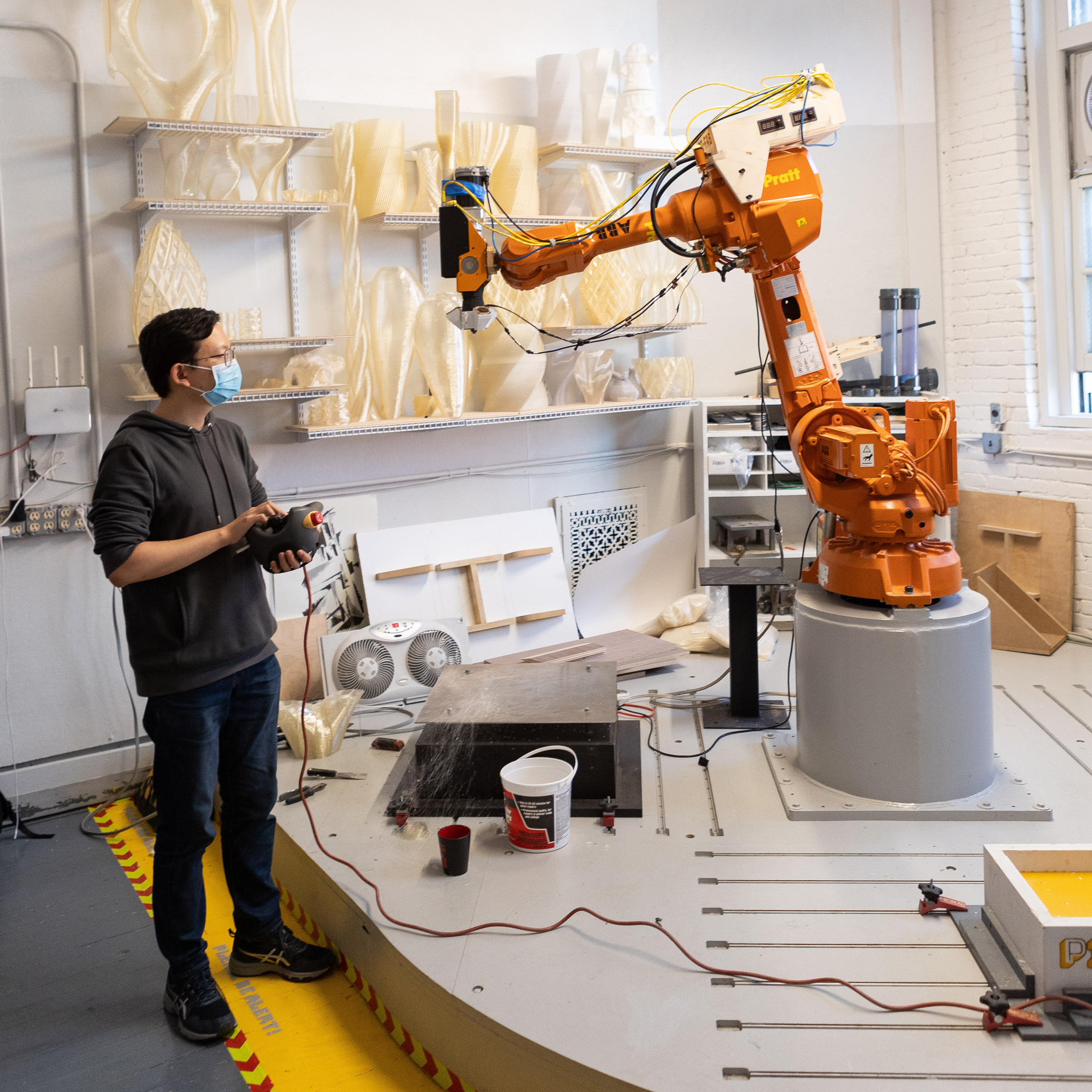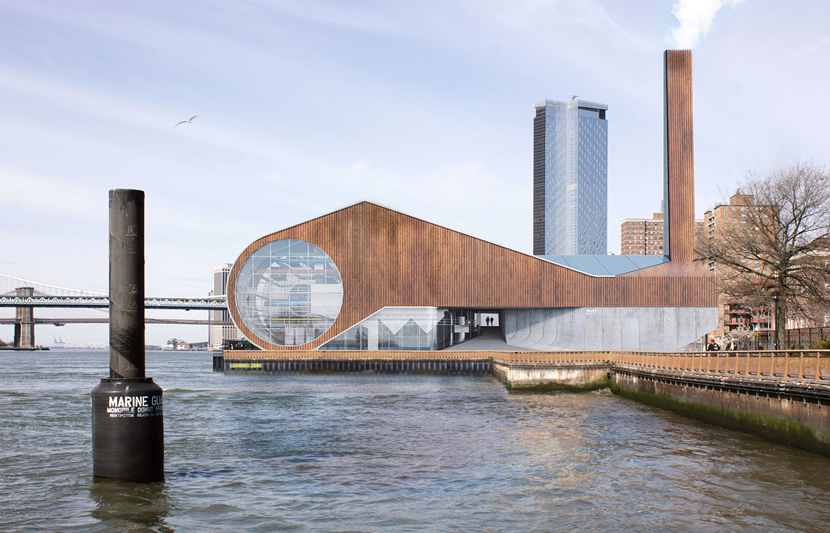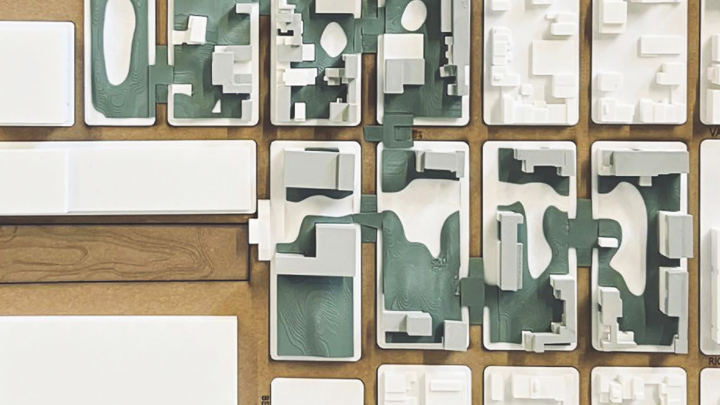
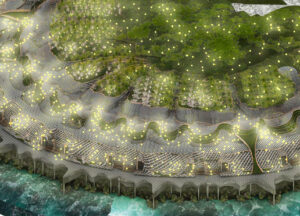
Urban Design at Pratt
Focused on the multifaceted architectural approach that includes landscape and architectural strategies, you’ll learn to design for denser 21st-century cities while preserving cultural, economic, and ecological resources. Seminars explore urban history and theory, 3D fabrication, data modeling and digital twin cities. New York City and Brooklyn-based urban design-directed research and interactive design critiques with students, faculty, and industry professionals will hone your theoretical and technical skills.
Student Work
Work by recent Urban Design graduates envisions near future cities able to harbor urban biodiversity and cultural diversity:
The Experience
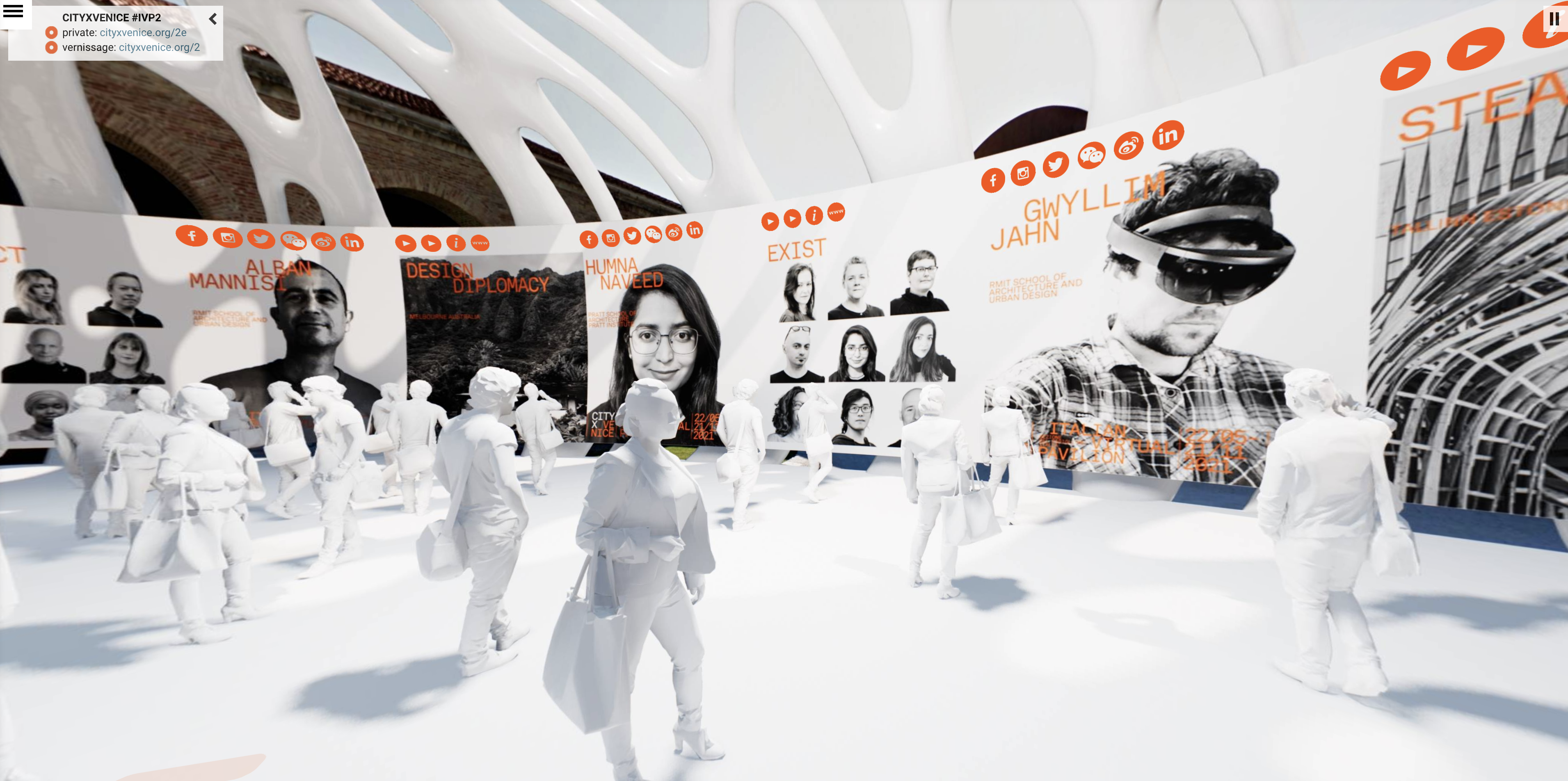
This program is an intense 3-term springboard into the practice of urban design with a culminating project and graduate thesis that offers a unique scaffolding for your vision of the future city. Class sizes of just 8-12 foster close collaboration with faculty and community partners, while the curriculum helps you frame and develop an individuated position for the resilient city. The Urban Design culminating projects are featured in an annual Fall Exhibition highlighting large scale physical models, immersive AR/VR models and thesis books and bringing your work into dialogue with a broad audience. Research opportunities include Climate Science workshops with Guerilla Science on Governors Island, presenting projects at Design Biennale (London, Barcelona, Venice) and contributing to the UN’s Designing Water and Policy.
Directed Research
Engaging at a scale larger than a building yet smaller than a city, your directed research addresses the most challenging questions facing the profession and discipline as we address the need for climate resilient strategies, equitable living conditions, and ecological building material at urban scales. Using Brooklyn and New York City as its laboratory, studio projects address questions of how we design and inhabit the urban realm as it continues to densify in the 21st century. Large-scale prototypes of urban blocks make use of GA/LA/UD’s fabrication labs LINK, while directed research is presented with faculty work at Pratt’s Research Yard in dialogue with the Center for Climate Adaptation.
Seminars, Lectures & Events
You’ll be exposed to relevant issues through urban theory and architectural media seminars, history-theory and architecture electives, and a dense array of lectures and events featuring prominent scholars. Complementing your studio experience, you’ll address topics of urban interiority, biodiverse cities, composite building typologies, and climate resilience, all with an emphasis on challenging conventional notions of adaptive reuse, infill development, and architectural and urban conservation.
Field Studies
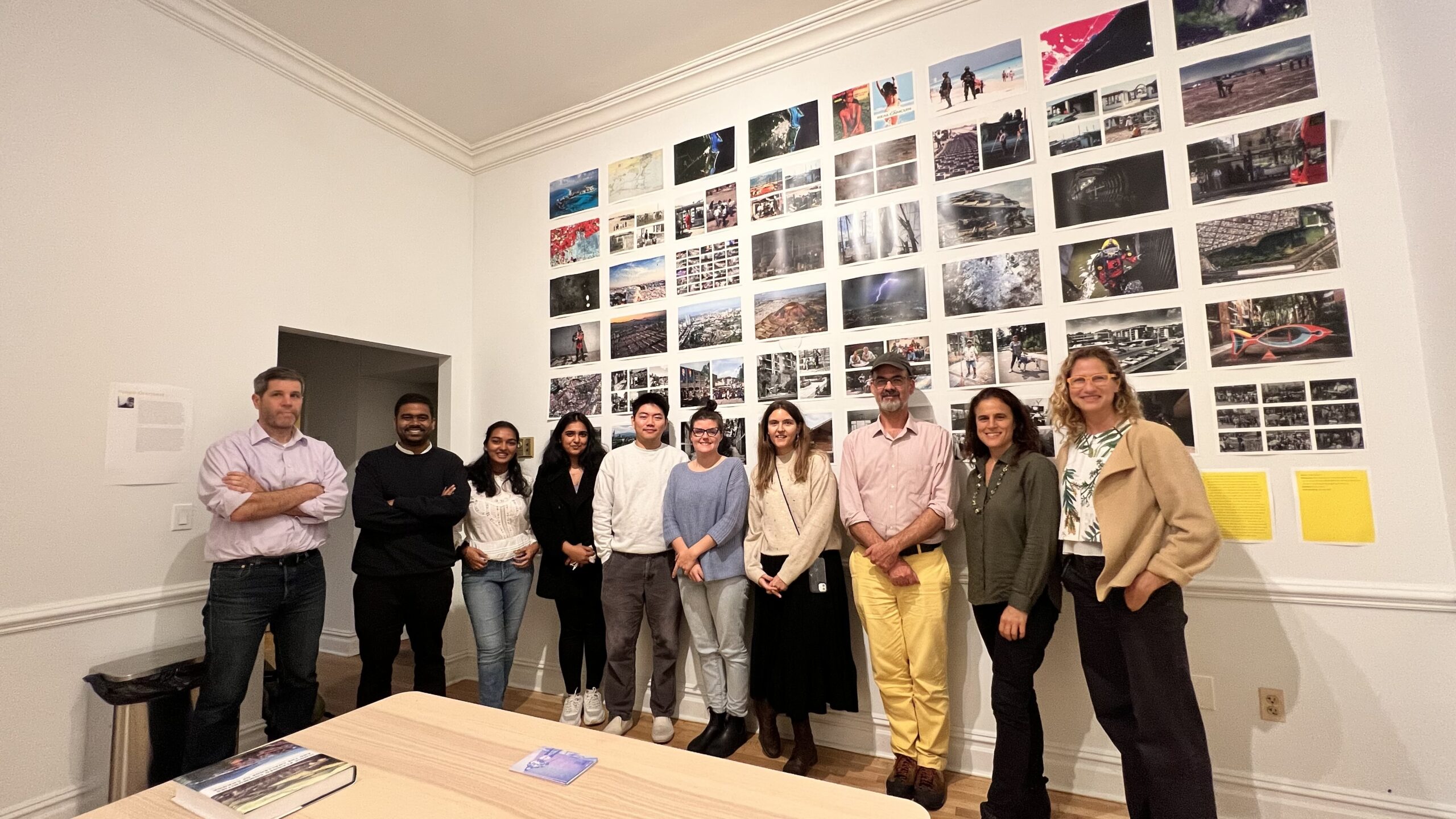
The MS Urban Design is an intensely local program in its focus: field studies include close dialogues with New York community partners, office visits, and workshops in New York’s museums and archives. We work on sites in New York and Brooklyn with experts that range from forensic hydrologists to resiliency engineers; we have office visits with leading urban design firms in New York; and we meet with local community partners invested in our area of study.
Learning Resources
We develop disciplinary fluency in our program of study and we celebrate the interdisciplinary nature of design critical to address the plurality and complexity of the environments in which we operate. Learn about resources.
Our Faculty
All full-time and part-time faculty are practitioners and deeply engaged in building equity through their own work in the public, private and non-profit sectors and bring the commitment, and their experience, into the classroom. See all Graduate Architecture, Landscape Architecture, and Urban Design faculty and administrators.
-
Alexandra Barker
Adjunct Associate Professor – CCE; Academic Coordinator of MS Arch Program
-
Erich Schoenenberger
Adjunct Associate Professor – CCE
-
Xenia Adjoubei
Visiting Assistant Professor
-
Alex Tahinos
Adjunct Assistant Professor; SCPS Lecturer
-
Peter Trummer
Visiting Assistant Professor
-
Fabian Llonch
Visiting Professor
Our Alumni
Pratt’s distinguished alumni are leading diverse and thriving careers, addressing critical challenges and creating innovative work that reimagines our world in leading urban design firms such as AECOM, GENSLER, and KPF, in leading urban research programs such as the Institute for Public Architecture and as faculty in prestigious national and international programs.
Where They Work
- Urban Designer, AECOM
- Fellow, Institute for Public Architecture (IPA)
- Urban Designer, Gensler
- Professor, Temple University
- Lecturer, Wietzman School of Design, University of Pennsylvania
- Lecturer, National University of Sciences and Technology, Pakistan
Success Stories
Ready for More?
| HERE’S HOW TO APPLY | Graduate Studies at Pratt | OUR CAMPUS & BEYOND |
|---|---|---|
| Join us at Pratt. Learn more about admissions requirements, plan your visit, talk to a counselor, and start your application. Take the next step. | Whether your goal is to advance your career, pivot to a new field, or explore your craft or groundbreaking research, our 33 graduate programs provide the rigor and support to achieve your vision. Explore our graduate programs in architecture, fine arts, design, information studies, and the liberal arts and sciences. Learn More. | You’ll find yourself at home at Pratt. Learn more about our residence halls, student organizations, athletics, gallery exhibitions, events, the amazing City of New York and our Brooklyn neighborhood communities. Check us out. |
